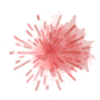In the Spotlight: Paul and Heidi Kushious on Orchestration
on 2019/03/12
category Leading, Orchestration, Spotlight
This month, we turn to experts in Orchestration, Paul and Heidi Kushious, and tune into one of the world’s greatest orchestras: The Cleveland Orchestra. Paul is a cellist, and Heidi is a flutist and solo piccoloist.

The Experience Lab (TEL): What does Orchestration mean to you and your work?
Paul Kushious (PK): It’s when one hundred or so highly trained individuals, whose skills have been refined largely in the solitary confinement of a practice room, come together to effectively create a whole that is greater than the sum of its parts.
Heidi Kushious (HK):
I’ve played in professional orchestras for the past 34 years, and, for me, it’s a focus on the melding, Connecting, weaving, Storytelling, and the harmonic whole. I care most about the Connection between individual musicians’ parts that form the glue to meld together and gather momentum to LEAD to a specific phrasing goal together.
TEL: You each have a part you play in the Orchestra. How do you stay aligned and in harmony with the whole?
PK: The first task, subordinating one’s individual agenda, is the foundation of hearing and receiving from others in order to identify your contributions to the whole. Given the nature of our training, this can come as a great shock to young players. They often go through Stages of development, first rejecting what they are Experiencing, then accepting what they feel is a compromised reality, only to find satisfaction and Joy in joining the collective efforts of the group. As a veteran player, I have very high expectations of myself and my colleagues and consequently enjoy their playing as an extension of myself.
HK: Good preparation is essential. I enjoy being a chamber musician, continually listening and crafting the phrase, even when the Orchestration is large and there are many musicians on Stage. My whole picture includes the musicians and their desire for excellence: striving for perfect intonation, concise rhythm, appropriate projection and voicing, and most of all… really feeling the music. I aim to set a standard for myself that I hope will inspire my colleagues to push beyond just playing the basics or simply getting the job done.
TEL: How would you describe the role of your conductor?
PK: The truly great conductors trust us to do our jobs. We reward that trust with extremely Personalized commitment. Our leader, the conductor, recently described our institution as “no longer a top-down structure.” I immediately told him I couldn’t disagree more. The rehearsal process demands a singular vision communicated quickly over the course of very few rehearsal hours per week to which we can all apply our individual talents. One hundred individual agendas would create chaos. Within that context, I find that I have enormous flexibility to imbue every note with detail and direction that I understand he expects of me. It also leaves room to create and LIVE by a lot of unwritten rules. I heartily welcome different approaches to the repertoire we play as long as the leader’s goals are communicated clearly.
HK: Musicians want to feel respected and have the conductor care enough to not only really know the score but Connect with eye contact and a sense of building something great together. The conductor should move in a way that makes the Orchestra move without thinking about it. We are able to move as the music moves us. It’s essential for us to have that Experience on Stage. Excellence and inclusiveness are the key to happiness as a player.
TEL: What advice do you have for our Experience Lab Partners from your perspective as a musician?
PK: COMMUNICATE! Almost every problem encountered is embedded in misunderstanding facts, Intentions, and goals. I would love a health care Experience that made me feel part of a team, not a medical ID number.
HK: It’s really fascinating how the two worlds can be so similar. My advice is to always listen, make eye contact, think of others more than yourself, take worthwhile risks, find a balance, prioritize, conserve energy for important goals, prepare well in advance, and respect intergenerational knowledge. Keep practicing excellence, and the result will always be better and more meaningful.
Think inflection, not infection!










